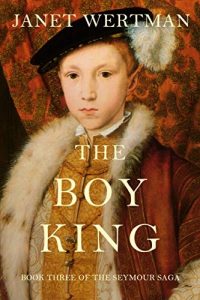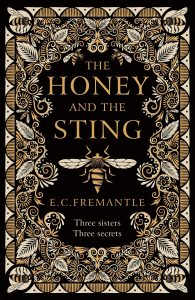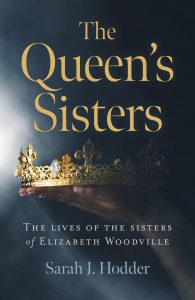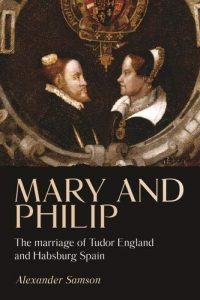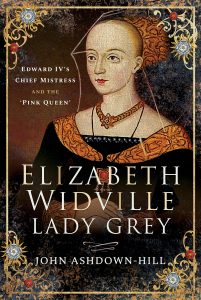If you have ever wondered what it must have been like to become King of England at 9 years old, then Janet Wertman’s final part of the ‘Seymour Saga’ goes a long way to answering that question. ‘The Boy King’ starts as Edward becomes King and we follow him as he learns the ropes of Kingship under the guidance firstly of his uncle, Edward Seymour and later, from John Dudley.
The narration is shared between Edward VI and his half-sister, Princess Mary and shows their difficulty in balancing their familial relationship with their opposing religious views. Throughout his reign, Edward must learn who to trust and try to recognise the levels of manipulation he is subjected to by those around him.
‘The Boy King’ can be read as a stand-alone novel. Or if you are me, you can read this one first and then immediately download ‘Jane the Quene’ and ‘The Path to Somerset’ because you are hooked.
Thank you to Janet Wertman for my review copy of ‘The Boy King.’
This is a mesmerising tale of three sisters, Hester, Melis and Hope, who each have their own secrets to hide. Hester, whose son was the result of an attack by the Duke of Buckingham, George Villiers, pretends to be widow, Melis appears to have visions communicated to her by the bees that she keeps and their half-sister Hope, who’s trust in people could lead to their downfall. After taking desperate measures when Villiers demands the return of his son, they are forced to go on the run. Hiding deep in the woods, the house and the bees start to reveal their secrets, leading to tragedy and a daring plan.
Fremantle paints an incredibly detailed picture of the lives of ordinary women, a world away from the Stuart royal court of previous novels. The sisters, Hester’s son Rafe, their allies and enemies are skilfully drawn, as well as their homes, the inns they stay at and the countryside they journey through. The magically descriptive prose pulls you into the 17th century and does not release its grip until the very last page.
Thank you to Michael Joseph for my review copy
‘The Queen’s Sisters’ is a strong debut by Sarah J Hodder. Her passion for the subject of the Woodville sisters is clear to behold, as she rescues them from the shadow of their sister, the Queen consort of Edward IV.
The marriage of Elizabeth to King Edward changed the lives of all her sisters, especially those whose marriages were arranged to forge alliances with the nobility. Some of their descendants were involved in key events at the end of the York dynasty and throughout the reign of the Tudors.
Although the sources relating to these women are scarce, Hodder has used them successfully and has managed to piece together events in each of the women’s lives. This concise, well written account is a great starting point for anyone wanting to learn more about these women.
Thank you to Chronos Books for my review copy.
Despite the valiant attempts of recent biographers of Mary I to present a balanced view of our first Queen regnant, public opinion has been slow to change. The process started by Linda Porter, Anna Whitelock and John Edwards amongst others, continues apace with Alexander Samson’s excellent new book.
Focusing on the marriage between Tudor England and Hapsburg Spain, Samson revisits the sources and looks at the ‘political prelude’ to the marriage, treaty negotiations, anti-Spanish feelings at the time and finally the co-monarchy itself. The investigation of the co-monarchs reveals a different view of Phillip and his role as King of England.
While not ignoring the negative events of Mary’s short reign, by thoroughly re-examining the evidence Samson highlights Mary’s positive achievements and the influence of her marriage on these.
This is a must read for those interested in this period and takes another large step towards the rehabilitation of Mary I.
Thank you to Manchester University Press for my review copy.
I don’t think I have ever read a biography where the author is so biased against their subject. The clue is in the sub-title ‘Edward IV’s Chief Mistress,’ John Ashdown Hill puts forward the case that Elizabeth Woodville was not married to Edward IV because he had already married Eleanor Talbot. All the events of Elizabeth Woodville’s Queenship are viewed against this theory and the author implies throughout that Elizabeth was involved in her alleged rival’s death, and the deaths of others. Although in the conclusion, he states that these are just hypotheses, Ashdown Hill, in my opinion does not try to create a balanced argument. While the inclusion of the full text of original sources makes interesting reading, for me the book is too biased to be enjoyable.
Thank you to Pen and Sword History for my review copy.

